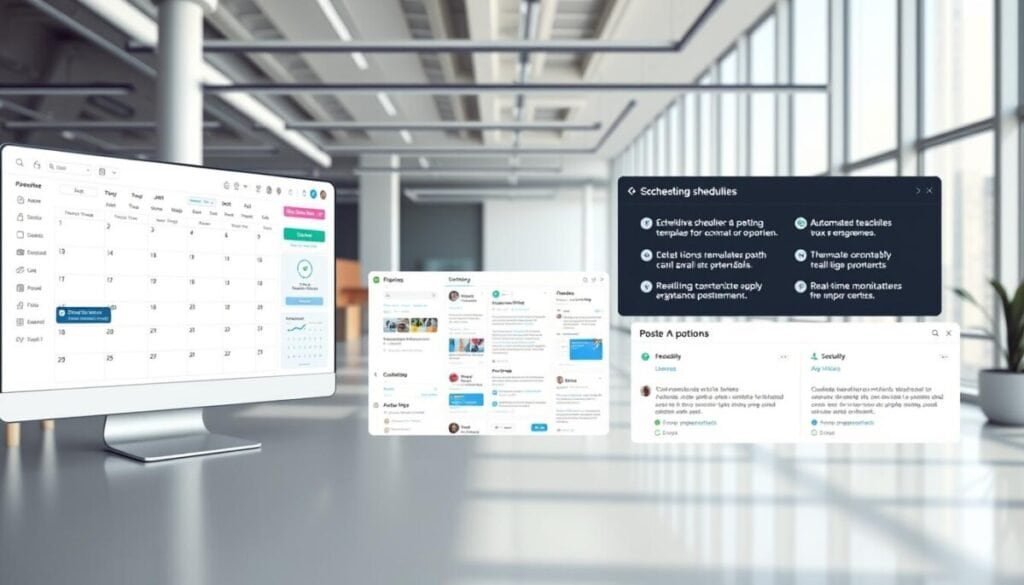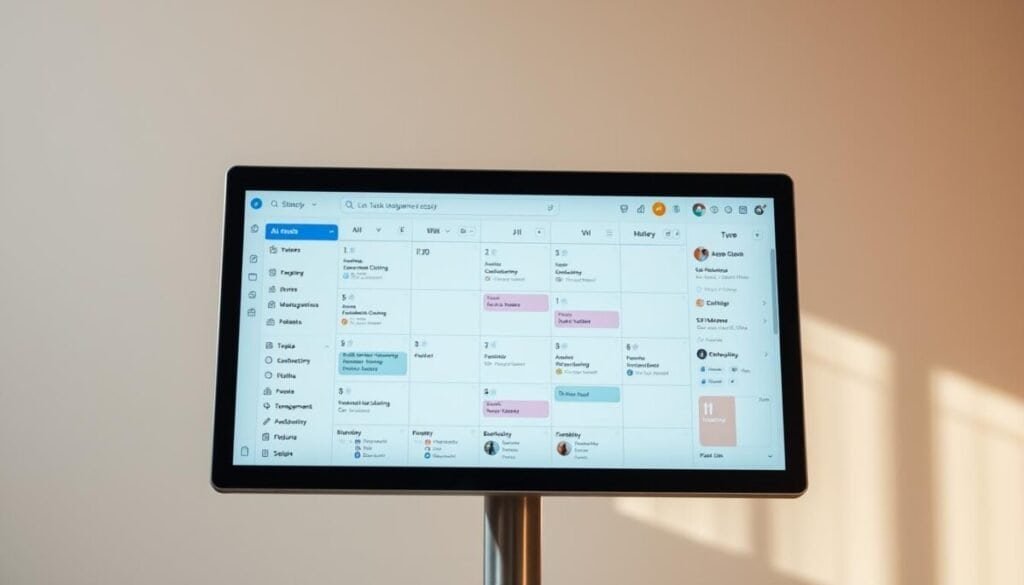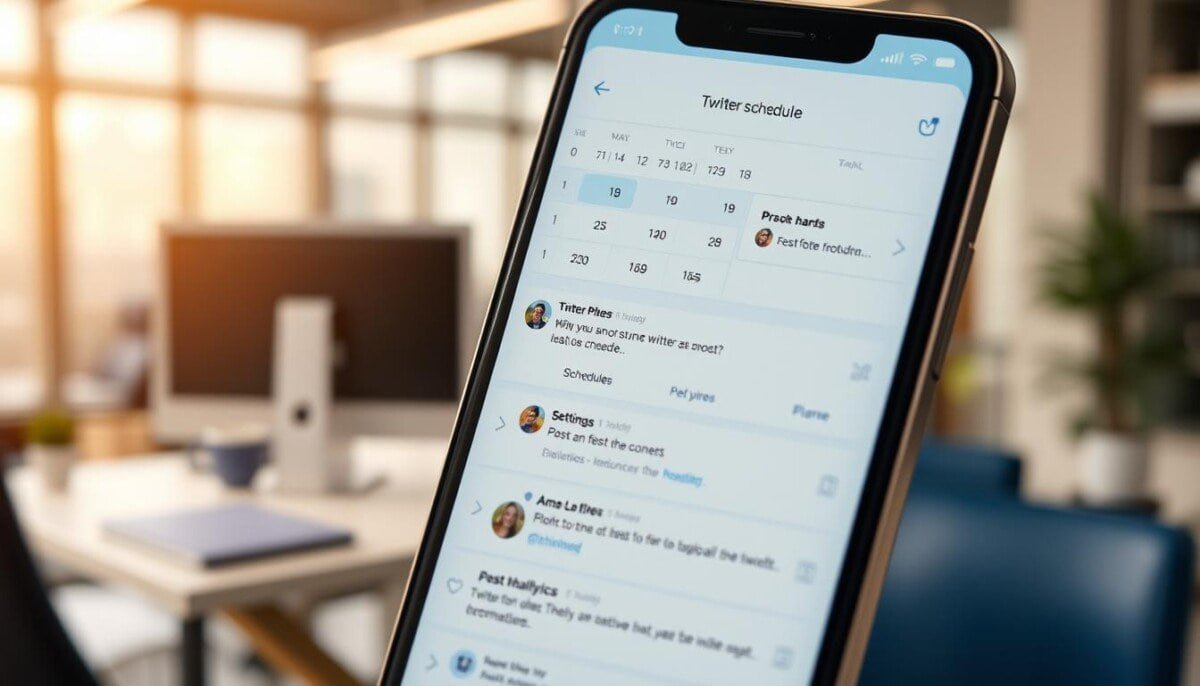Have you ever wondered whether planning your social media updates in advance or sharing them in the moment is more effective? This question lies at the heart of a growing debate among marketers and content creators. Both approaches have unique advantages and challenges, making it essential to understand which fits your strategy best.
Scheduling your tweets ensures a consistent presence, even when you’re not online. It allows you to maintain engagement with your audience without being tied to your device. On the other hand, posting in real time lets you join live conversations and capitalize on trending topics instantly. Each method has its place in a well-rounded content plan.
In this article, we’ll explore the benefits and drawbacks of both approaches. Whether you’re looking to streamline your workflow or boost engagement, understanding these methods will help you make informed decisions for your social media strategy.
Key Takeaways
- Scheduling tweets helps maintain consistency and engagement.
- Real-time posting allows for immediate interaction with trending topics.
- Both methods are essential for a balanced content strategy.
- Tools like Buffer and Hootsuite can simplify the scheduling process.
- Mixing scheduled and spontaneous posts can enhance authenticity.
Understanding Twitter Post Strategies
Choosing the right moment to post can make a big difference in engagement. Whether you’re planning ahead or sharing in the moment, both methods have their place in a successful strategy. Let’s dive into how these approaches work and why they matter.
Overview of Scheduling and Real-Time Posting
Scheduling your tweets allows you to plan your content in advance. This ensures a consistent presence on the platform, even when you’re busy. Tools like Buffer and Hootsuite make it easy to set a date time for your posts.
On the other hand, real-time posting lets you join live conversations. This approach is perfect for trending topics and immediate interactions. Both methods can help you reach your audience effectively.
Why Both Approaches Matter
Social media algorithms favor consistent activity. Scheduling helps you maintain a steady flow of tweets, while real-time posting keeps your audience engaged with timely updates. Combining both methods creates a balanced strategy.
For example, planning your time around peak engagement hours can boost visibility. Meanwhile, jumping into trending discussions can increase your reach. Both approaches are essential for maximizing your impact on the platform.
Importance of Scheduling Tweets for Social Media Engagement
A well-organized content calendar is the backbone of effective social media management. It ensures consistency, which is crucial for maintaining high engagement levels. By planning your tweets in advance, you can align them with marketing campaigns and strategic goals.

Benefits of Creating a Content Calendar
A content calendar helps you stay organized and focused. It allows you to batch-create posts, saving time and reducing stress. For example, you can schedule reminders for live events or promotions ahead of time. This ensures your audience never misses important updates.
Additionally, a calendar helps you maintain a steady flow of content. This is vital for keeping your followers engaged and satisfying platform algorithms. Tools like Buffer and Hootsuite make it easy to plan and execute your scheduled posts efficiently.
Enhancing Audience Interaction with Scheduled Posts
Scheduled posts allow you to optimize your posting times for maximum reach. For instance, posting during peak hours can significantly boost visibility. This strategy ensures your tweets are seen by the largest possible audience.
Moreover, a consistent posting schedule builds trust with your followers. They know when to expect updates, which fosters loyalty. Combining scheduling with real-time interactions creates a balanced approach that enhances overall engagement.
Real-Time Posting: Capitalizing on Live Engagement
Joining trending conversations in real time can create authentic connections. When you post during live events or trending moments, you tap into the excitement and energy of the moment. This approach fosters immediate engagement and builds genuine relationships with your audience.

Building Authentic Connections Through Instant Interaction
Real-time posting allows you to interact with your audience when they’re most active. By choosing the best time to post, you increase the chances of your tweet being seen and shared. This immediacy helps you stay relevant and responsive, which strengthens trust and loyalty.
For example, during live events like product launches or breaking news, posting in real time can spark conversations and drive participation. This strategy not only boosts visibility but also creates a sense of community among your followers.
The Role of Timeliness in Trending Conversations
Timing is everything when it comes to trending topics. Posting at the right time ensures your message aligns with what’s happening in the moment. This approach maximizes your reach and keeps your content fresh and engaging.
Data shows that brands that join trending conversations see higher engagement rates. Whether it’s a hashtag campaign or a viral topic, being timely can amplify your impact. Combining real-time posting with a well-planned content calendar ensures you’re always ready to seize the moment.
Twitter Scheduling vs Real-Time Posting: Pros and Cons
Balancing planned content with spontaneous updates can transform your social media strategy. Both approaches have unique strengths, and understanding their differences is key to maximizing your impact. Let’s explore the advantages and limitations of each method.

Advantages of Scheduling Tweets Utilizing Tools
Using a scheduling tool simplifies the process of planning your content. These tools allow you to set the correct date time for your posts, ensuring they go live at the optimal moment. For example, third-party apps like Typefully offer features such as multi-account management and distraction-free writing.
Here are some key benefits of using a scheduler:
- Consistency: Maintain a steady flow of tweets without being online 24/7.
- Efficiency: Batch-create posts and save time for other tasks.
- Analytics: Track performance and adjust your strategy based on data.
Limitations and Benefits of Real-Time Posting
While scheduling offers convenience, real-time posting has its own advantages. It allows you to join trending conversations instantly, fostering authentic connections with your audience. For instance, clicking the right corner button to post during a live event can boost engagement significantly.
However, there are limitations to consider:
- Time Sensitivity: Missing the perfect moment can reduce impact.
- Resource Intensive: Requires constant monitoring of trends.
- Unpredictability: Spontaneous posts may not always align with your brand voice.
Combining both methods creates a balanced approach. Use a scheduling tool for planned content and real-time updates for trending topics. This strategy ensures you’re always ready to engage your audience effectively.
Step-by-Step Guide to Scheduling Tweets on Twitter
Planning your social media updates doesn’t have to be overwhelming—here’s how to simplify the process. Whether you’re using native tools or third-party apps, scheduling your tweets can save time and boost engagement. Let’s break it down step by step.
Navigating Twitter’s Native Scheduler
To schedule a tweet using Twitter’s native tool, follow these steps:
- Open the tweet composer and type your message.
- Click the calendar icon at the bottom right corner of the composer.
- Select the desired date and time for your post.
- Click the “Schedule” button to confirm.
This process ensures your tweet goes live at the optimal moment, even if you’re not online.
Utilizing Third-Party Tools for Efficient Scheduling
Third-party apps like Typefully offer additional features to streamline the process. Here’s how to use them:
- Sign up for the app and connect your account.
- Type your tweet and choose the date and time.
- Make sure to review the settings before confirming.
These tools often provide analytics and multi-account support, making them ideal for advanced users.
| Feature | Native Scheduler | Third-Party Apps |
|---|---|---|
| Multi-Account Support | No | Yes |
| Analytics | Limited | Comprehensive |
| Ease of Use | Simple | Advanced |
By following these steps, you can master the art of scheduling and keep your audience engaged effortlessly.
Mastering Tools for Effective Twitter Scheduling
Effective social media management starts with the right tools. Advanced scheduling tools like Typefully can significantly enhance your strategy. These platforms offer a range of features that simplify planning and optimize engagement.

Features of Top Scheduling Tools
Tools like Typefully provide a variety of functionalities to streamline your workflow. For instance, you can upload media, manage multiple account profiles, and schedule posts with precision. These features save time and ensure consistency in your content.
One standout feature is the ability to use twitter analytics to determine the best posting times. This data-driven approach helps maximize reach and engagement. Additionally, many tools allow you to preview posts before scheduling, ensuring quality and alignment with your brand voice.
Integrating Twitter Analytics for Optimal Post Timing
Integrating twitter analytics into your strategy is essential for success. These insights reveal when your audience is most active, allowing you to schedule posts at the optimal date time. For example, tools often display peak engagement hours, enabling you to plan accordingly.
Using analytics, you can also track performance metrics like impressions and clicks. This data helps refine your strategy and improve future posts. By leveraging these insights, you can ensure your tweets resonate with your audience and drive meaningful interactions.
Mastering these tools not only enhances efficiency but also boosts your overall social media presence. Whether you’re managing a single account or multiple profiles, the right app can make all the difference.
Creating a Content Calendar for Your Twitter Strategy
A structured approach to managing your social media presence can significantly enhance your results. A content calendar is a powerful tool that helps you organize your posts, align them with campaigns, and maintain consistency across your profile.
Organizing Tweets and Campaigns
Using a calendar allows you to plan your tweets in advance, ensuring they align with your marketing goals. For example, you can schedule posts around product launches, holidays, or industry events. This ensures your content is timely and relevant.
Tools like Typefully simplify the process by letting you batch-create posts and set specific date times. This saves time and ensures your tweets go live at the optimal moment, even when you’re not online.
Aligning Your Content with Marketing Initiatives
A content calendar helps you align your posts with broader marketing campaigns. For instance, if you’re running a promotion, you can schedule reminders and updates to keep your audience engaged. This approach ensures your content supports your overall strategy.
Using a calendar across multiple profiles on the same platform promotes a unified brand voice. It also helps you track performance and make data-driven adjustments to improve engagement.
By integrating scheduling tools and leveraging their features, you can streamline your workflow and focus on creating high-quality content. This not only saves time but also ensures your tweets resonate with your audience.
Monitoring and Adjusting Your Twitter Performance
Tracking your social media performance is essential for long-term success. By consistently analyzing your metrics, you can identify what works and what needs improvement. This step ensures your strategy remains effective and aligned with your goals.
Leveraging Twitter Analytics for Continuous Improvement
Using analytics dashboards helps you monitor the performance of your tweets. These tools provide insights into key metrics like impressions, clicks, and engagement rates. For example, you can track which posts resonate most with your audience and adjust your content accordingly.
Make sure to review your calendar regularly. This step ensures your scheduled tweets align with your overall strategy. By analyzing trends over time, you can refine your approach and maximize your impact. Additionally, consider incorporating feedback from your audience to tailor your content more precisely to their preferences. Scheduling recurring tweets effectively can help maintain a consistent presence and reinforce key messages, making it easier for your followers to engage with your brand. By staying attentive to both your calendar and audience insights, you’ll be able to keep your social media efforts fresh and relevant.
Refining Your Strategy Based on Engagement Trends
Engagement trends offer valuable insights into your audience’s preferences. For instance, if image tweets consistently perform better, focus on creating more visual content. This step helps you tailor your strategy to meet your audience’s needs.
Additionally, monitor how your tweets perform during specific events or campaigns. This data allows you to optimize your timing and content for future posts. By continually refining your approach, you can ensure your strategy evolves with your audience.
Advanced Strategies for Optimal Posting Times
Experimenting with different posting times can reveal hidden opportunities for growth. By testing various posting schedules, you can identify the best time to reach your audience and maximize engagement. This approach ensures your content resonates when it matters most.
Testing Different Posting Schedules
One effective tip is to vary your time post settings across different days and weeks. For example, try posting in the morning, afternoon, and evening to see which time yields the highest engagement. Tools like analytics dashboards can help track performance and refine your strategy.
Another approach is to align your posting schedule with specific events or trends. For instance, during holidays or industry conferences, adjusting your date and time settings can help you capitalize on increased activity. This flexibility ensures your tweet reaches the right audience at the right moment.
Case studies show that brands that regularly test their posting schedules see significant improvements in engagement. By monitoring results and making data-driven adjustments, you can consistently optimize your profile performance. This proactive approach keeps your content fresh and relevant.
Here are some actionable steps to get started:
- Use analytics to identify peak engagement hours for your profile.
- Experiment with posting at different times and track performance metrics.
- Adjust your posting schedule based on data insights and audience behavior.
By following these tips, you can uncover the best time to post and ensure your tweet reaches its full potential. This strategy not only boosts engagement but also strengthens your connection with your audience.
Wrapping Up Our Twitter Strategy Journey
As we wrap up our exploration of social media strategies, it’s clear that a balanced approach yields the best results. Combining planned content with spontaneous updates ensures your brand remains consistent and engaging. Whether you’re optimizing your posting schedule or jumping into live conversations, each method has its place.
We’ve highlighted the importance of tools and techniques to streamline your workflow. From selecting the right date and time to using analytics for insights, these steps help you maximize engagement. Always make sure to review your outcomes and adjust your strategy as needed.
To write tweet effectively, balance planning with spontaneity. This approach keeps your brand authentic and responsive. By refining your process and staying adaptable, you can continue to evolve and connect with your audience meaningfully.



